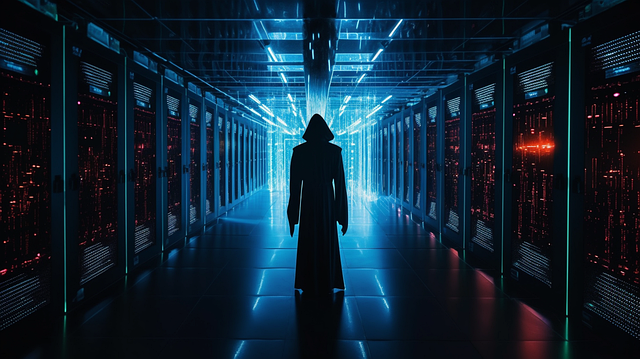
The speed at which cyber threats develop demands that business organizations advance their capabilities against cybercriminals consistently. Security threats appear every day, so businesses need to develop active defense procedures that protect crucial information, along with money and their good name.
Cybercriminals are spreading day by day, using the most advanced technology to hack the most secure systems. As far as 2025 is concerned, cyberattacks are more likely to get more innovative and advanced social engineering tactics.
Businesses require a complete safeguarding plan for 2025 cyber threats according to this guideline that includes vital cybersecurity practices and applicable situations along with professional insights.
Understanding the Cyber Threat Landscape in 2025
The digital world operates under constant threats where businesses experience primary risk exposure. The modern cybercriminal world persists in finding ever-more sophisticated methods to take advantage of security vulnerabilities through ransomware attacks along with data breaches. Recognizing current threats serves as the basis to prevent them from happening.
The Rise of Ransomware Attacks
Ransomware now stands as a top cyber threat that causes severe economic and operational damages to businesses. The attackers encrypt an organization’s data and seek payment in exchange for recovering the data threats to expose confidential information in case of non-payment.
Key Statistics:
- The typical ransomware payment amount grew by 62 percent during 2024.
- A survey showed that ransomware struck 66% of organizations throughout the recent twelve months.
- Businesses lose an average sum of $1.85 million during each ransomware-driven operational shutdown.
Cloud Security Challenges
Cloud security has become a crucial issue because numerous companies now employ cloud-based solutions. Organizations need to handle problems with cloud configuration together with preventing unauthorized access and dealing with data breaches.
Common Cloud Security Risks:
- Unsecured authentication systems enable unauthorized users to enter the system.
- The improper setup of cloud storage systems causes data leaks to occur.
- Insider threats from employees with excessive permissions.
Advanced Phishing and Social Engineering Attacks
At present cyber criminals refine their phishing strategies which become harder to identify. Numerous cyber assaults such as spear phishing along with CEO fraud and business email compromise (BEC) scheme deceive workers into handing over sensitive information.
Signs of a Phishing Attempt:
- Emails with urgent requests for login credentials.
- Unexpected attachments from unknown senders.
- Suspicious links that redirect to fake login pages
Cybersecurity Strategies for Businesses in 2025
Implement Multi-Factor Authentication (MFA)
Security increases through MFA because users must follow multiple verification steps to confirm their identity, thus stopping unauthorized access attempts.
Regular Employee Cybersecurity Training
Organizations depend on their staff members as their primary defense mechanism. Organizations that provide periodic cybersecurity training to employees prevent many types of security mistakes from becoming breaches.
Topics to Cover in Training:
- Recognizing phishing attempts
- Safe password management
- Secure remote work practices
Invest in AI-Powered Threat Detection
Through the analysis of security anomalies, artificial intelligence solutions detect attacks automatically so they cannot accomplish any damage. Real-time threat pattern identification occurs through the usage of machine learning algorithms.
Secure Endpoint Devices
Endpoint security has become vital because remote work has increased in popularity. Companies need to establish system security for all network-connected devices like laptops, mobile phones, and IoT devices.
Best Practices for Endpoint Security:
- Use endpoint detection and response (EDR) solutions.
- Enforce device encryption for all company-issued hardware.
- Restrict access based on user roles and responsibilities
AI: The Game Changer in Cybersecurity
Artificial Intelligence is rebuilding cybersecurity by making its system of threat detection automated and improving response time.
Benefits of AI in Cybersecurity:
- Real-time threat detection
- Automated security patching
- Reduced false positives in security alerts
Case Studies: Cyber Attacks and Prevention Lessons
Case Study 1: Colonial Pipeline Ransomware Attack
A ransomware incident struck the United States’ most extensive fuel pipeline system in 2021, causing it to remain offline for multiple days. The incident cost Colonial Pipeline $4.4 million, which they paid to the attackers through Bitcoin.
Lesson Learned:
The damage could have been reduced through network segmentation along with backup procedures.
Case Study 2: Twitter Social Engineering Attack
In 2020, hackers infiltrated Twitter’s internal tools after performing a phishing attack, which exposed their high-profile accounts.
Lesson Learned:
Identity-based access controls combined with multi-factor authentication would have stopped unauthorized system access.
Practical Cybersecurity Checklist for Businesses
| Security Measure | Description |
| Multi-Factor Authentication (MFA) | Adds an extra layer of security for login access. |
| Regular Security Audits | Identifies vulnerabilities before they are exploited. |
| Data Encryption | The system protects crucial data so unauthorized parties cannot access it. |
| Cyber Insurance | Provides financial protection against cyber incidents. |
| Employee Training | Educates staff on recognizing and preventing cyber threats. |
| AI-Powered Security Tools | Enhances threat detection and response times. |
Conclusion
Businesses that deploy robust security systems cut down their exposure to cyber threats despite the continuous development of such threats. Companies can protect their digital resources from cyberattackers through combined efforts of maintaining an understanding of cybersecurity trends along with artificial intelligence solution purchases and staff education programs.
TIP: The protection of cyber assets requires constant monitoring because cybersecurity stays active over time. Establish a continuous security protocol update system and threat response strategy to maintain business security in 2025 and onward.
Frequently Asked Questions
What is Cybersecurity, and what is its role in today’s life?
Systems, as well as networks and data, require protection against hacking attempts through cybersecurity controls. In the present digital world, cybersecurity protects personal information and prevents financial fraud, and it ensures business security and national protection.
What are the tips for protection from cybersecurity in 2025?
The combination of powerful passwords, enabling authentication methods, maintaining updated software, employee cybersecurity training, and using AI-based threat detection systems constitutes protection against cyber threats in 2025. Business protection remains possible through periodic backup routines and enforced system access management systems.
What will the extent of cybersecurity be in 2025?
Advancements in cybersecurity for 2025 will utilize AI, yet cyber threats at that time will be both advanced and difficult to discover. Different threats will require businesses to deploy advanced system defenses like artificial intelligence threat detection together with zero-trust security and orientation programs for employees to protect themselves properly.
What will be the largest cyber threat in 2025?
AI-powered cyberattacks, as well as the new phishing, deepfake scams, and intelligent ransomware, represent the most important cyber threat that 2025 will have. Attackers plan to locate artificial intelligence, which strengthens the effectiveness of their schemes.


